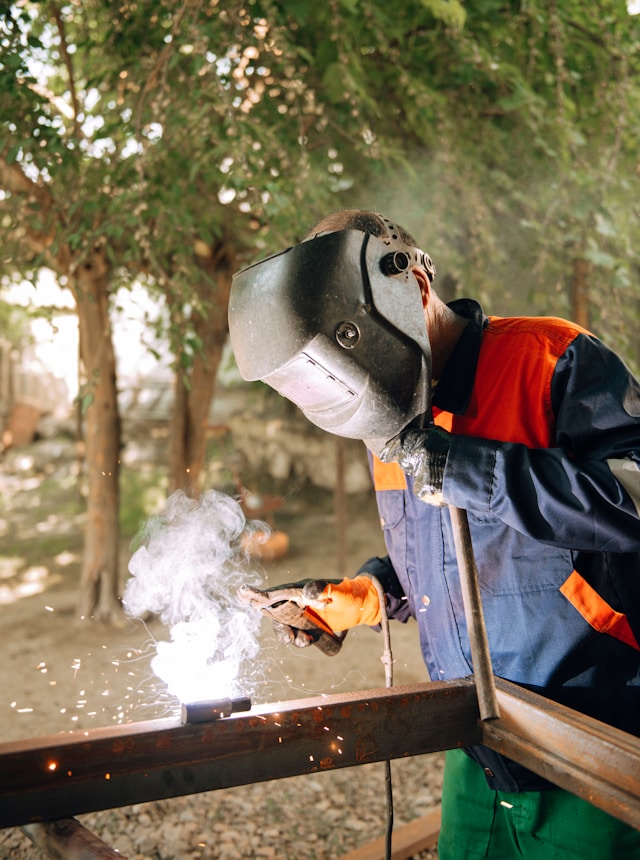Welding is an intricate task that requires precision, safety, and comfort. One of the common issues faced by welders is sleeve slippage. When sleeves slip, they cause discomfort and pose a significant safety risk. Sparks, molten metal, and extreme heat can easily reach exposed skin, leading to burns and other injuries. This article explores strategies to prevent sleeve slippage welding and ensure a safe and efficient welding experience.
Factors Contributing to Sleeve Slippage
Sleeve slippage occurs when the sleeves of a welder's jacket, shirt, or welding sleeves shift out of place during work. This movement exposes the welder's arms to sparks, spatter, and UV radiation hazards. Several factors contribute to sleeve slippage:
- The fabric of the sleeves can play a significant role. Some materials are more prone to slipping than others.
- Loose or improperly fitted sleeves are more likely to slip.
- The repetitive movements and positions required in welding can cause sleeves to move.
- Sweat can make sleeves slide more efficiently, especially in high-temperature environments.
Choosing the Right Gear
The first step in preventing sleeve slippage welding is selecting appropriate welding gear. Here are some key considerations to secure welding sleeves:
Material
Opt for materials that offer both protection and stability. Leather and flame-resistant cotton are popular choices. Leather is durable and resistant to sparks and spatter, while flame-resistant cotton is lightweight and breathable.
Fit
Ensure that your sleeves fit snugly but comfortably. A proper fit minimizes the chances of slippage. Adjustable cuffs, elastic bands, and straps can help achieve a secure fit.
Design
Look for anti-slip welding sleeves specifically designed to prevent slippage. Some welding jackets come with integrated sleeve straps or elastic cuffs. Welding sleeves often feature thumb
holes or finger loops to keep them in place.
Specialized Welding Sleeves
Specialized welding sleeves are designed to address slippage and provide enhanced protection. They come in various materials and designs, offering options to suit different welding environments.
- Leather welding sleeves are durable and provide excellent protection against sparks and spatter. They often feature adjustable straps and elastic cuffs to ensure a secure fit.
- Flame-resistant cotton sleeves are lightweight and breathable, ideal for extended welding sessions. They typically have elastic bands or adjustable straps to prevent slippage.
- Kevlar sleeves offer high levels of cut and heat resistance. They are often used in environments where both welding and cutting operations are performed. Kevlar sleeves are designed to stay in place, providing reliable protection.
Techniques to Prevent Sleeve Slippage Welding
Sleeve slippage is a common issue welders face that can lead to discomfort and safety risks. By implementing welding sleeve slippage solutions, welders can keep their sleeves secure and focus on their work more confidently. Here are some sleeve slippage prevention tips to prevent sleeve slippage during welding:
Layering
Wearing multiple layers provides additional friction and stability, preventing sleeves from slipping. For instance, wearing a long-sleeve shirt underneath your welding jacket can help keep the outer layer in place by providing extra grip between the layers.
Elastic Bands
Elastic bands or straps around the cuffs of your sleeves can hold them securely in place. Many welding jackets have built-in elastic cuffs, but you can also use aftermarket bands. These bands provide a snug fit that helps keep sleeves from moving.
Thumb Holes and Finger Loops
Welding sleeves with thumb holes or finger loops are designed to be worn over gloves, which helps keep them from riding up your arms. This simple addition can significantly prevent sleeve slippage welding and anchor the sleeves to your hands.
Tape
Using heat-resistant tape to secure your sleeves to your gloves or jacket can provide an extra layer of security. Use tape designed for high temperatures to avoid melting or burning. This method ensures that the sleeves stay in place even with vigorous movement.
Regular Adjustments
Adjusting your sleeves and gear regularly can help maintain a secure fit throughout your welding session. Periodic checks and adjustments allow you to fix any slippage issues before they become problematic, ensuring continuous protection and comfort.
Proper Gear Maintenance
Maintaining your welding gear is crucial for preventing sleeve slippage. Regular cleaning and inspections ensure that your equipment remains in good condition and continues to provide optimal protection. Dirt, grease, and debris can affect the grip and stability of your sleeves, so keeping them clean is essential.
Custom Solutions
Custom welding sleeve slippage solutions can be highly effective for welders with specific needs or challenges. Custom-made anti-slip welding sleeves tailored to fit your body precisely can address issues like sleeve slippage more effectively than off-the-shelf options. Working with a manufacturer or tailor to create perfectly fit gear can provide higher comfort and security.
Innovative Designs
Explore innovative designs incorporating features like integrated straps, adjustable cuffs, and non-slip materials. Manufacturers are continually developing new products to enhance welder safety and comfort. Anti-slip welding sleeves, for example, are designed to prevent slippage and provide enhanced protection.
Positioning and Ergonomics
Adopting comfortable and stable working positions that minimize excessive arm movement can help prevent sleeve slippage welding. Position yourself to avoid overreaching, which can cause sleeves to shift. Developing consistent movement patterns that reduce the need for frequent adjustments can also help maintain a secure welding sleeves.
Conclusion
Preventing sleeve slippage during welding is essential for both safety and comfort. By choosing the right gear, employing effective techniques, maintaining equipment, and considering ergonomics, welders can significantly reduce the risk of sleeve slippage. Specialized welding sleeves and welding sleeve slippage solutions offer additional options for those with specific needs. Prioritizing proper sleeve slippage prevention tips ensures a safer and more efficient welding experience.
Welders can enhance their safety and efficiency by using secure, anti-slip welding sleeves and welding sleeve slippage solutions. Remember, fixing welding sleeve movement is not just about comfort—it's about protecting yourself from potential hazards and ensuring the quality of your work.
Strongarm is the leading welding manufacturer and provider in America. We have a team of trusted professional welders offering a wide range of welding aprons and gears to suit your needs. Contact us today for all your weldings essentials.






